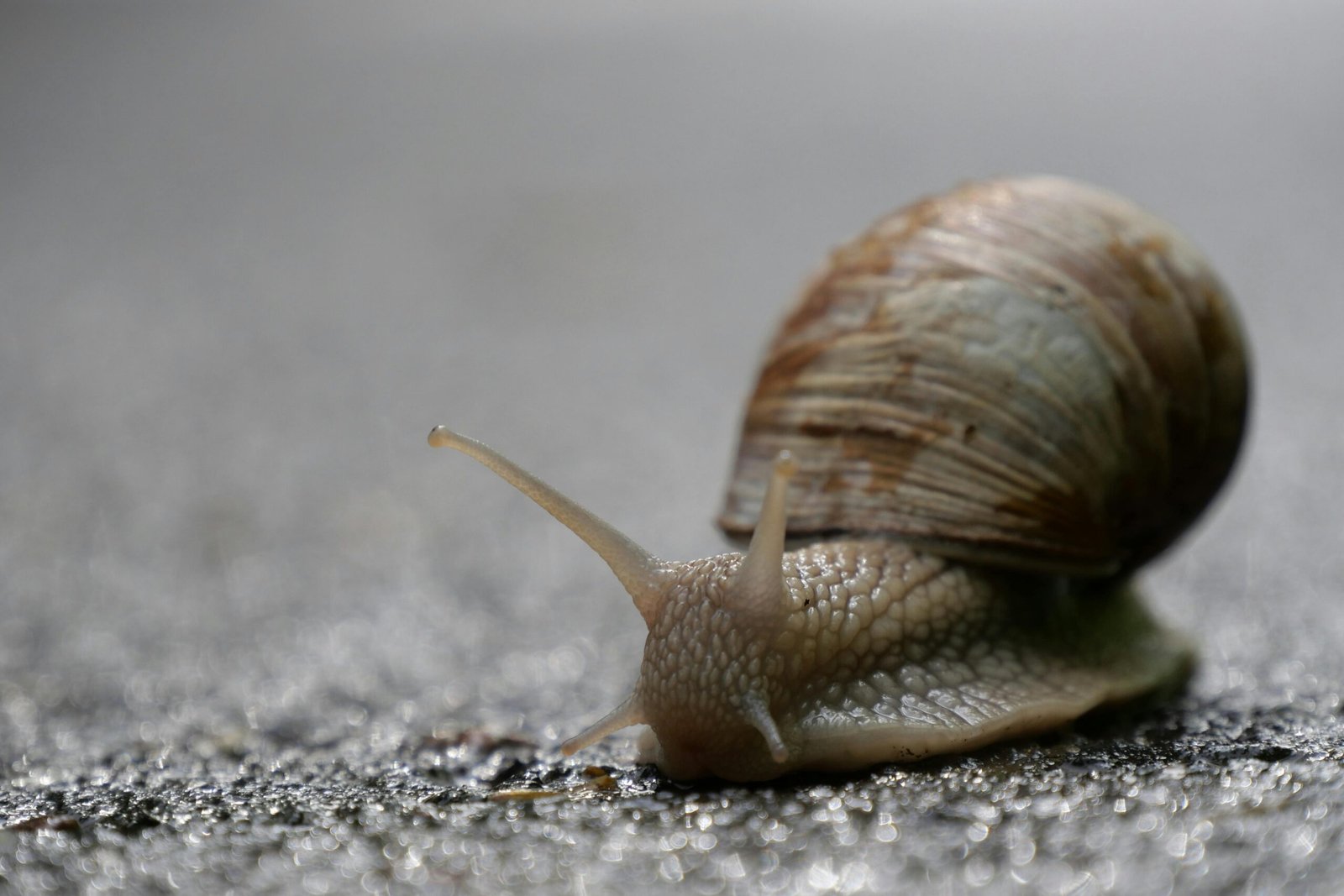
How Fast Does a Snail Travel? An In-Depth Look at Snail Speed
Have you ever watched a snail glide across the pavement and wondered, “how fast does a snail travel?” The phrase “a snail’s pace” is famous for a reason. However, the actual speed might be more complex than you think. This article explores the exact speed of snails, the factors that influence it, and how they stack up against other creatures.
The Average Speed of a Snail: A Clear Answer
So, let’s get straight to the point. The average garden snail moves at a speed of approximately 0.03 miles per hour (mph). To put that into perspective, this is about 1.3 centimeters per second. Therefore, it would take a snail more than a full day to travel just one mile.
This speed is not constant, of course. It represents an average pace under normal conditions. In reality, a snail’s speed can change quite a bit depending on several important factors. Consequently, while they are certainly slow, their movement is a fascinating process.
Factors That Influence a Snail’s Speed
A snail’s body and its environment directly influence its journey. Several key elements determine how quickly it can move from one point to another. Understanding these helps explain why their speed varies so much.
- Species: First, not all snails are created equal. There are thousands of snail species, and some are naturally faster than others. For example, the common garden snail has a specific top speed, but other types may move differently.
- Surface Texture: In addition, the surface a snail travels on plays a crucial role. A snail moves much faster on a smooth, damp surface like glass or a wet leaf. Conversely, a rough, dry surface like concrete or sand creates more friction, which slows it down significantly.
- Environment: Snails are very sensitive to their surroundings. They prefer cool, humid conditions. As a result, they are most active at night or after it rains. Hot and dry weather causes them to slow down or stop moving entirely to conserve water.
- Motivation: Finally, a snail’s purpose affects its pace. A snail searching for food or trying to escape a predator will likely move at its top speed. On the other hand, a snail with no particular destination will meander more slowly.
How Fast Does a Snail Travel Compared to Other Animals?
To truly grasp a snail’s speed, it helps to compare it to other animals. We know the answer to “how fast does a snail travel,” but what does that speed mean in the animal kingdom? For example, a tortoise, another famously slow creature, moves at about 0.25 mph. This makes a tortoise roughly eight times faster than a snail.
On the other end of the spectrum, a human walking casually moves at about 3 mph. This means a person is 100 times faster than a snail. And compared to a cheetah, which can sprint at 70 mph, the snail’s pace is almost stationary. This comparison truly highlights their deliberate and cautious movement.
The World’s Fastest Snail: A Guinness World Record
Believe it or not, snail racing is a real event. The Guinness World Record for the fastest snail belongs to a snail named Archie. In 1995, Archie completed a 13-inch (33 cm) course in just 2 minutes. This event shows that even among these slow creatures, some can achieve remarkable bursts of speed.
Frequently Asked Questions About Snail Speed
Why are snails so slow?
Snails are slow for a few key reasons. Their movement relies on a single muscular organ called a foot. They glide by creating waves of muscle contractions along this foot. Furthermore, they must produce a layer of slime, or mucus, to reduce friction. This entire process is very energy-intensive, which limits their top speed.
Do snails ever stop moving?
Yes, absolutely. Snails spend a lot of time resting. They often stop to conserve energy and moisture, especially during unfavorable conditions like heat or dryness. During winter or droughts, some snails can even enter a state of dormancy called estivation for months.
Can a snail outrun its predators?
Generally, a snail cannot outrun predators like birds, beetles, or rodents. Speed is not their defense mechanism. Instead, their primary protection is their hard shell. When threatened, a snail retracts its soft body into its shell for safety.
In conclusion, while a snail’s pace is undeniably slow, it is a perfectly adapted speed for its lifestyle. It allows them to navigate their environment effectively while conserving precious energy. So, the next time you see one, you’ll know exactly how fast a snail travels and appreciate the complex journey it is on.